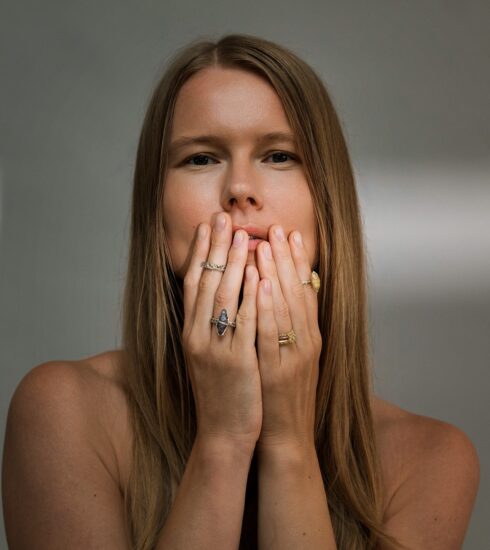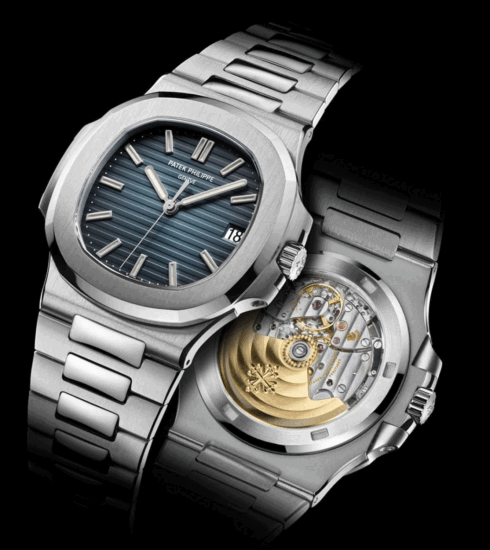Birthstone of the month June, part 1: The pearl
Birthstone of the month June, part 1: The pearl
This time, the birthstone for the month of June isn't actually a colored gemstone, but rather another precious and coveted natural gem: the pearl. And it's not the only gem. In addition to the pearl, alexandrite and moonstone are also associated with June.
Left: Modern and elegant pearl jewelry by Yana Nesper. © Yana Nesper
Birthstone Tripe for June: Pearl, Moonstone and Alexandrite
June has begun. That means we're introducing another gemstone associated with this month. This month, there are several precious natural gems that could serve as the basis for personalized jewelry: moonstone, alexandrite, and pearls. In this article, we'll be focusing on pearls.
Birthstone of the month June, part 2: The moonstone
Birthstone of the Month June, Part 3: Alexandrite
The pearl isn't actually a gemstone. The fact that three precious materials were associated with June is also a bit odd. So here's some more information about the origins of this tradition.
More articles about birthstones:
Literature and history excursion on the origin of birthstones
The custom of wearing a different gemstone each month, hoping for its special protective or healing powers, dates back to ancient times. In the 1st century AD, the historian Josephus believed that the monthly stones symbolized the twelve gemstones on the breastplate for Jewish high priests, the so-called "choshen," which, according to the Bible, was made for Aaron, the brother of Moses. The twelve gemstones on the breastplate were supposed to symbolize the twelve tribes of Israel.
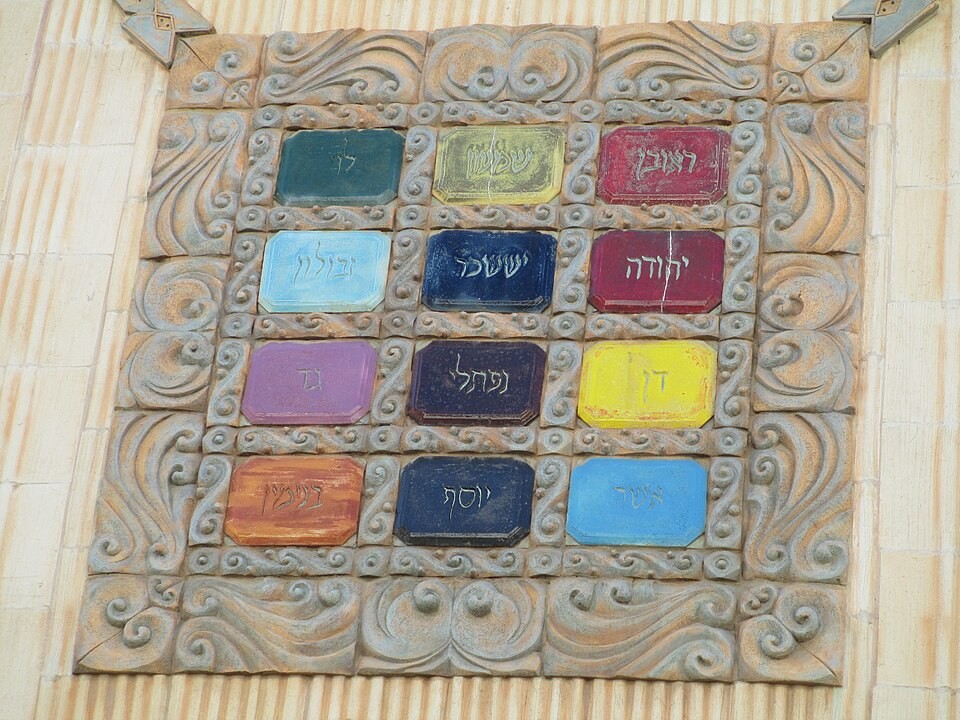
However, the exact gemstones involved could not be identified. While descriptions of the color and general appearance can provide clues, they ultimately remain so ambiguous that different Bible translations refer to different gemstones. For example, a stone described as "sky blue" could be lapis lazuli, but is listed as a sapphire in one translation of the Luther Bible.
The modern order of birthstones was established in 1912 by the National Association of Jewelers, now Jewelers of America. The goal was to make gemstones more attractive through appropriate marketing. This goal seems to have been successful. In 1912, only pearls and moonstone were considered birthstones for June. The greenish alexandrite was added as an additional birthstone for June in 2019. Before the 20th century, chrysoberyl, turquoise, and agate were assigned as birthstones for June. But now back to the pearl...
The Pearl: Treasure from the Shell
Pearls are truly a very special natural product. They are found in mussels and are found in salty seas, as well as freshwater lakes and rivers. A special feature of the pearl is that it is virtually born perfect from the mussel – it enchants with its soft colors and exquisite luster. No cutting or any other type of processing is necessary to express its beauty. It is perfect as it is – even if it is not. In addition to spherical pearls, irregularly shaped baroque pearls are also becoming very popular again. They are absolutely individual in their shimmering appearance and thus also emphasize the personality of their wearer – in fact, pearls have recently carved out their own niche in men's jewelry.
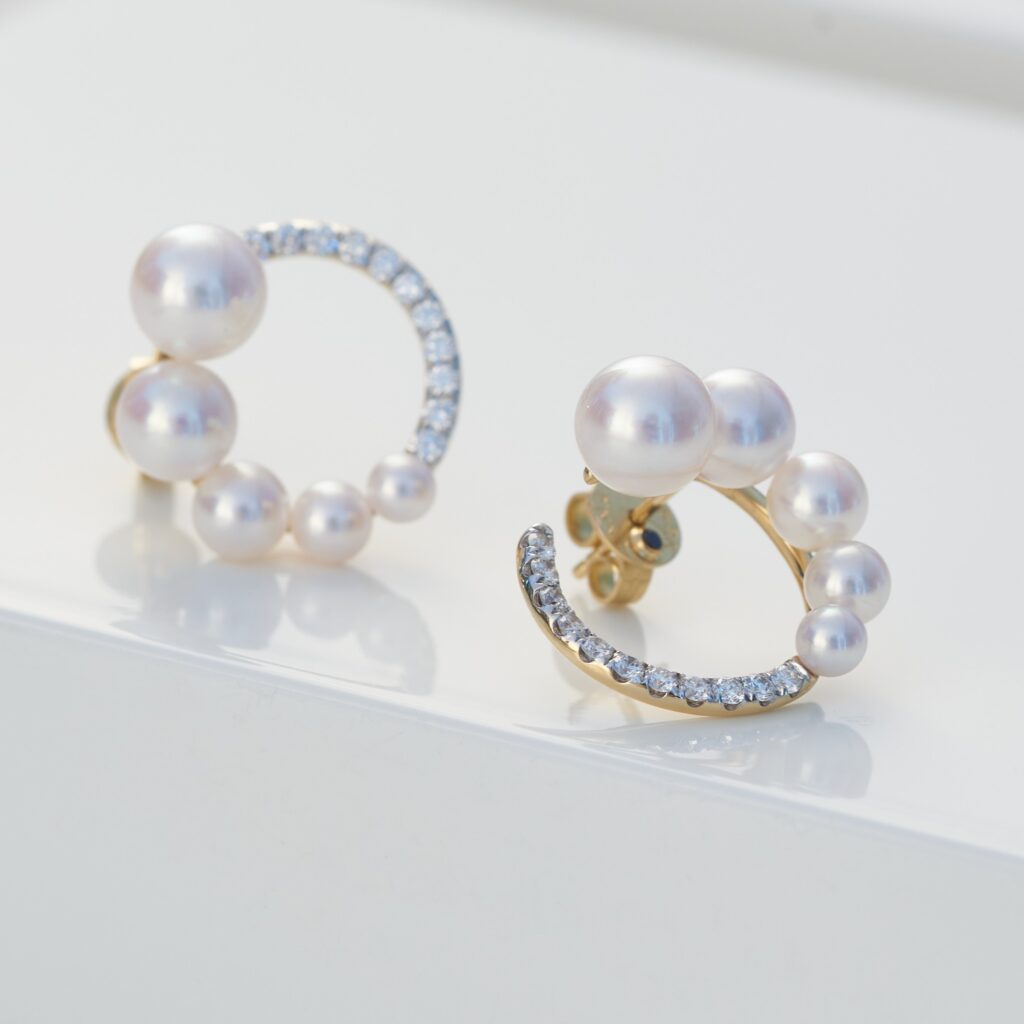
Fundamentally, however, the pearl has always been something deeply feminine; in ancient times, it was a symbol of virginity, purity, and innocence. Stories surround the English Tudor Queen, Elizabeth I, who was also called "The Virgin Queen" because she never married. Elizabeth I is said to have often worn pearl jewelry to symbolically underline her virginal status and, at the same time, to subliminally signal: I don't need a husband to rule.
Elizabeth's mother, Anne Boleyn, wore a long pearl necklace with a pendant in the shape of the letter B, from which hung three teardrop-shaped pearls. The necklace no longer exists, but is one of the most frequently depicted pieces of jewelry in the world.
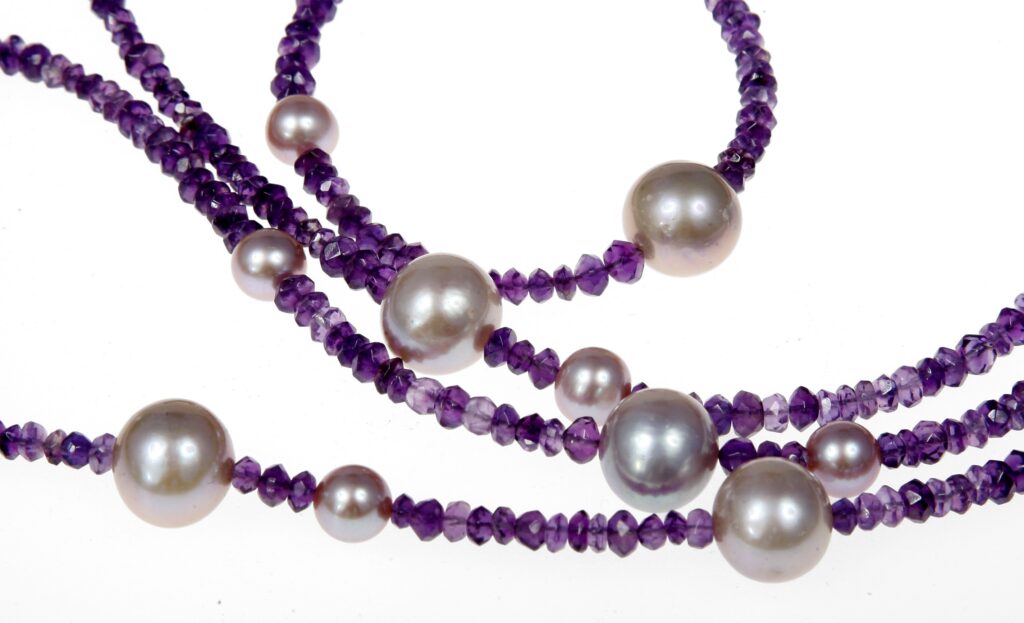
One of the most famous pearls in the world is "La Regente," which Napoleon Bonaparte gave to his wife, Josephine. Another famous pearl is the teardrop-shaped "La Pelegrina," the size of a pigeon's egg, which passed through several noble ladies' hands before actor Richard Burton gave it to his lover, actress Elisabeth Taylor, in 1972. According to a story told by Liz Taylor in the book "My Love Affair with Jewelry," the precious pearl was once almost swallowed by her dog.
How is a pearl formed?
Pearls can grow naturally, making them particularly rare and sought-after—or they can be cultivated by humans. Pearls form naturally when, for example, a parasite enters the mussel, which it perceives as a foreign body or an irritation. The mussel then forms protective layers of nacre around the intruder or the irritated area, which we find so beautiful.

It used to be widely believed that mussels also formed pearls around grains of sand. However, scientists have since abandoned this theory because mussels are naturally surrounded by so much sand that a grain penetrating them shouldn't pose any problems. Instead, the site where a pearl forms could be compared to a kind of cyst.
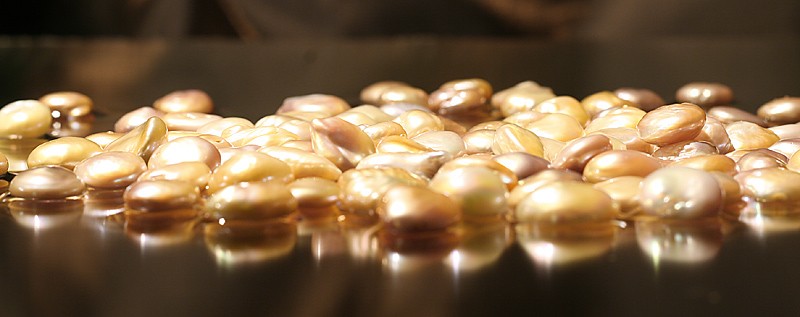
The mussel, as a muscular mollusk, moves the nacre body within itself. A particularly smooth movement forms perfectly round pearls. If the mussel is forming several pearls at a time, or if there isn't enough room to move the pearl around, irregularly shaped baroque pearls are created, which can also take on a flat or slightly bowl-shaped appearance.
It takes years for a mussel or oyster to form beautiful, large pearls, a fact that also makes pearls so sought after.
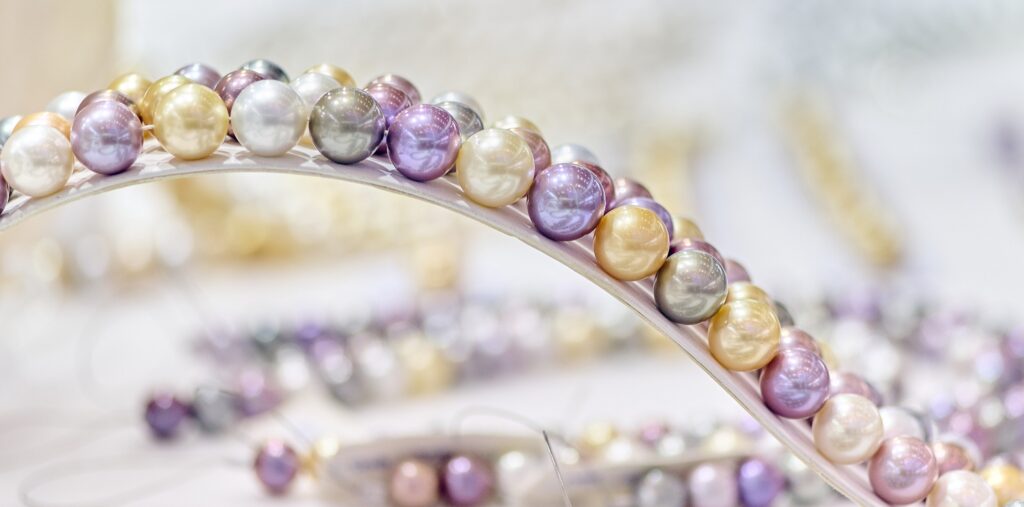
However, there are differences in pearl harvesting. If the mussel is opened wide to remove the pearls, it will not survive this step. More sustainable farming methods allow the mussel to be pried open only slightly to remove the pearl and use a so-called mantle piece for cultivating new pearls. Mussels, like most living creatures, are also sensitive to environmental influences, and marine mussel species in particular are susceptible to death from changes in water temperature. Mussel farms in China could not operate during the coronavirus crisis, resulting in losses that drove up the price of exquisite pearls.
Origin of pearls
Saltwater cultured pearls can be found in many places around the world. The famous Akoya pearls are cultivated in China and Japan. South Sea pearls originate from the northern coasts of Australia, Indonesia, and Southeast Asia, with large cultures also found in the Philippines. The special Tahitian pearl, with its seductive black and dark gray tones, comes from the Gambier Islands and the Tuamotu Archipelago, which are part of French Polynesia. Freshwater cultured pearls mostly come from China.
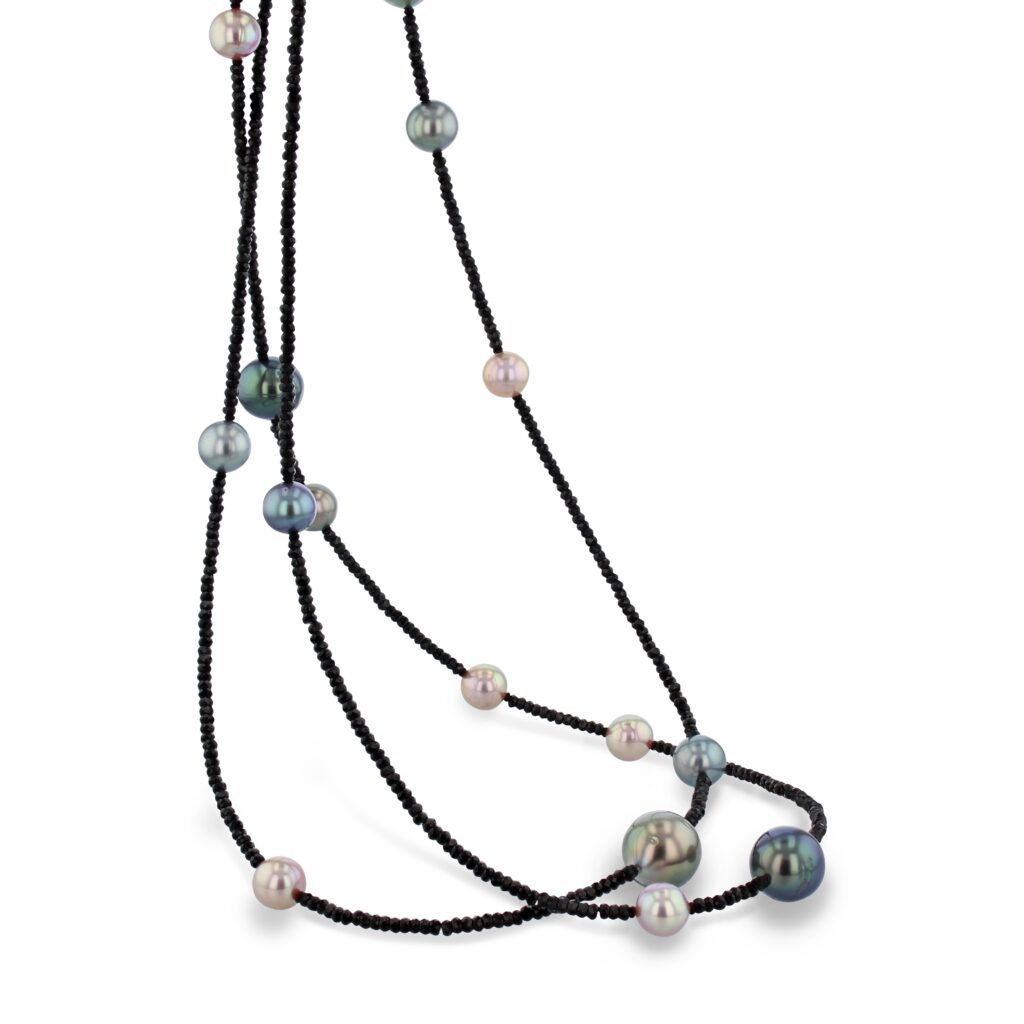
When we think of pearls, we often picture the creamy white variety, but pearl colors are surprisingly diverse. They come in soft golden luster, delicate pink, silvery gray, and the anthracite-gray Tahitian pearls even shimmer in shades between green and pink.
Pearls can also be artificially colored. So, it's worth asking about the type of pearl and the treatment when purchasing, as this naturally plays a role in the price.
(Left: Necklace with greenish and bluish shimmering Tahitian pearls by Hesse Perlen.)
The Pearl – a versatile all-rounder
For a time, the classic pearl necklace was considered a piece of jewelry from our grandmother's time. Now the style has reclaimed the spotlight and is presented in a wide variety of variations. Pearls are incredibly popular. And no wonder, because they can do it all. You can wear them as a classic strand or let a single pearl with a special character become the highlight. Pearls are so timelessly beautiful that they look good next to any material, be it gold, silver, or colored gemstones. They don't even look out of place next to angularly cut diamonds or between chunky chains. They can do just about anything, and that's what makes them so popular. They refine evening wear as well as an office outfit, are perfect for a beach party or a night out at the disco. There's no age limit. They suit young women just as well as women in midlife and beyond. That's why it should be easy to find exactly the pearl that makes us happy.




